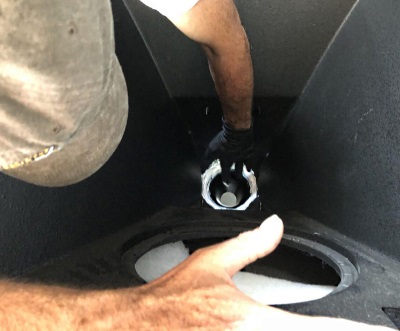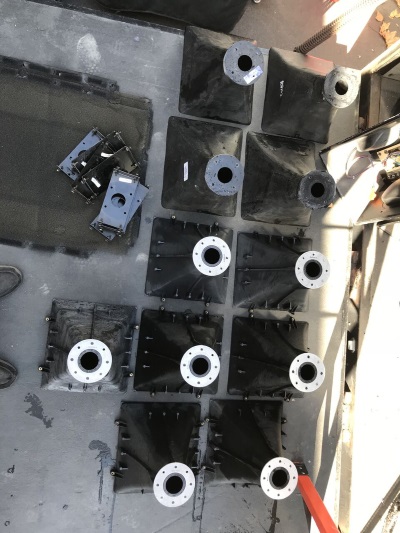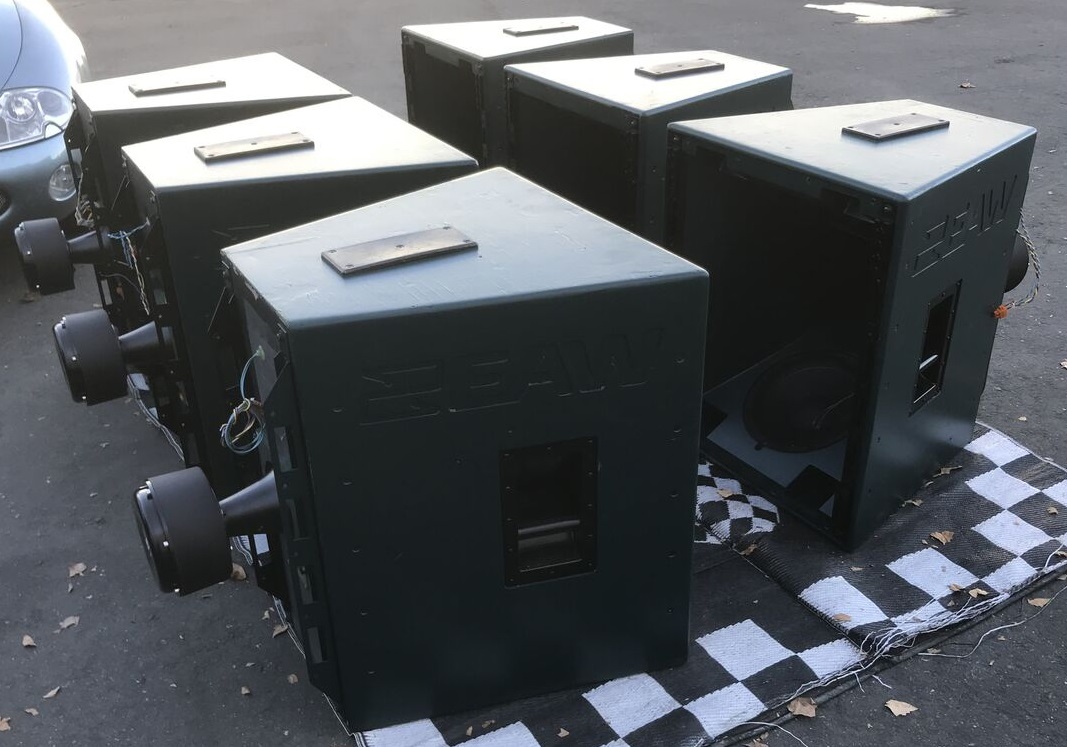
Ongoing Challenges
Soon I was surrounded by parts. They were everywhere, with most being air-freighted to us. Of course, RAM had to respond quickly, but Celestion was also shipping via air freight. Lots of overnight and red label packages were showing up, and any single part not showing up in time would have resulted in disaster.
Fortunately, all parties were on the mark and everything arrived in the nick of time.

The build challenges were plentiful but were dispatched one at a time:
– The new Beyma 12-inch driver baskets were about 1 millimeter larger in diameter than the original driver, which required enlarging the existing holes in the wooden enclosures.
– The t-nuts of the 12-inch drivers also proved troublesome because they have a bolt pattern that’s slightly smaller in diameter than the original. (You know what’s really tough? The batting inside the enclosures getting spun up with the drill.)
– The Axi2050/horn fitment looked incredibly challenging on the surface, but as it turned out, the only thing we needed to do to make it fit inside the original back boxes of the enclosures were shorter rigging bolts in the area where the Axi2050 would reside.
The device sat within a couple of millimeters from the back of the box, and it has to be seen to be believed – it’s as though the unit was purposely designed to fit in there. (Either that or the enclosure was built to accommodate this mysterious device from “The Future.”)
– The Beyma compression driver required only a 2-inch to 1-inch throat adapter. The only other thing we want to address in the future is damping some mechanical resonances that were present with the original horn flare design, which I think can be done easily with some modern damping material placed on the backside. (That is “if” we stick with the three-way design.)
Hitting The Road
Grind, cut, saw, router, drill, bolt, screw, paint, ad nauseum – and the enclosures were ready to be loaded on the truck. The only problem? There was absolutely no time left, meaning there was zero opportunity to even hang the boxes to test them. Further, several unfinished enclosures were loaded on the truck that would require work once we arrived on-site.
As we departed, I found myself hoping that me and my merry group of propeller heads had gotten it all correct because a man in Vegas was waiting to fire up this system. That man is noted mix engineer Robert Scovill, and next time, we’ll find out the result of this initial restomod test run.

Read the rest of the Restomod series here.
